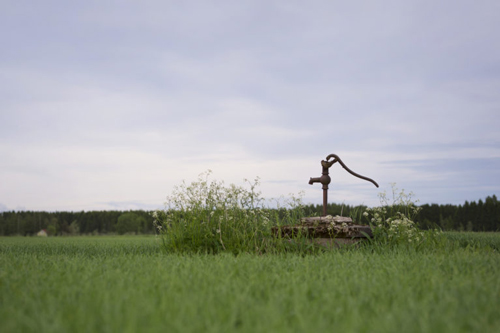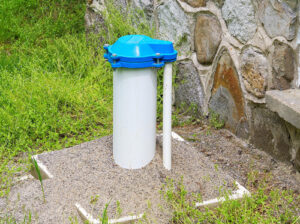Being a private well owner can come with plenty of benefits, like increased control over the treatment that your water goes through and not needing to rely on a municipal water treatment company. However, there can also be challenges when you live in flood prone areas. Any homeowner with a private well in an area that is likely to experience flooding needs to understand what to do so that they don’t have contaminated water as a result. How can you protect your water supply?

How Can You Protect Your Well in Advance?
One of the best ways to prepare your well if you live in one of the many flood prone areas in Maryland is by installing a flood proof well cap. Older, traditional well caps are tightened to the well casing, but they are not pest-proof or waterproof. If you want to avoid the stress that comes along with pests or flood water getting into your well, flood proof well caps are the best way to stop water intrusion during flooding, heavy rain, heavy snow and more. We can help replace your well cap or educate you more about the difference between your traditional cap and one that is flood proof.
What Should You Do If Your Well Floods?
Whether you know that flood water has entered your well or you are merely suspicious that it has, you should exercise caution and act as if water has entered the well. It’s important to know that you should never turn on the pump, as there is a serious risk of electrical shock and damage to you, the well or the pump if they have been flooded. Never drink or wash with well water from the well until it has been disinfected. There could be bacteria and other dangerous compounds in the well water, and if you use or drink the water before disinfecting the well you could get very sick.
How Do You Restore Your Well After a Flood in Flood Prone Areas?
- Always assume that the well is contaminated with bacteria. If you have reason to suspect that the water was also contaminated with petroleum, like an oily sheen on the surface or a storage tank in the area, you should test the well for contamination before you start the disinfection process.
- Check over the electrical components with the help of a well contractor, pump contractor or qualified electrician. All of the electrical components need to be completely dry to work properly.
- Debris must be removed from the pump, and you should also take care to remove any visible sediment that might be inside from the flood waters.
- If the water inside of your well is muddy or cloudy, you should pump the well until it runs completely clear.
- If you live in flood prone areas, you should always contact a well contractor when possible to clean your system. It can be challenging and time-consuming to disinfect a well, so you should only do so without the help of a professional when you have to.
How Can You Disinfect Your Well in an Emergency?
- Mix together two quarts of liquid chlorine bleach with 10 gallons of water. Pour this mixture down the well to achieve a concentration of 50-100 ppm. Open all of the faucets in your home, bypassing any filtration systems, and run the water until it smells of chlorine.
- Connect a garden hose to the outside tap to put water back into the well, while washing down the inside of the well casing and the well itself. After you turn off the taps indoors, you should allow the system to sit for 24 hours. During this time, you cannot turn on any faucets in the home or you will need to start the process over again.
- After at least 24 hours, flush the lines by running the water out through a garden hose.
- Once the water has completely flushed and no longer smells of chlorine, you should have the water tested again. If the testing shows that the water is still contaminated you should have a professional come and disinfect the well for you. After you get a clear water test, you can use the water for bathing and washing clothes. Within 7-10 days you should have another test performed. When this also comes back clear, you can resume using your water to cook and drink.
Test Your Well Water with Hague Quality Water of Maryland
If you are concerned about the quality and contents of your water, we are here to help with your water improvement projects. Whether you need the Hague WaterMax® System or additional filtration beyond that, our team cares deeply about the health and safety of your family. We offer a convenient mail-in water testing kit for conducting a complete water test at home. If you’d prefer to drop off samples, you can also do so easily. For additional assistance, call Hague Quality Water of Maryland at (410) 757-2992.



